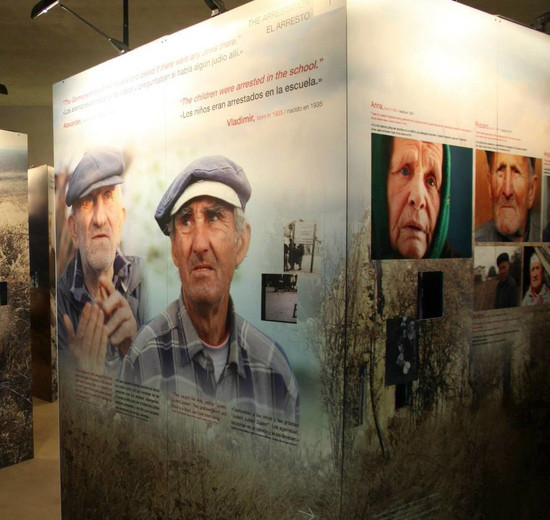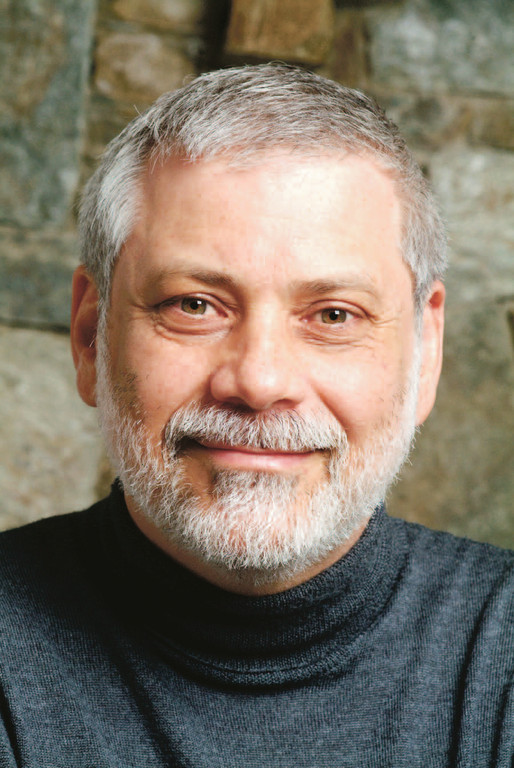Future unclear for Detroit’s Holocaust museum
Of the many Holocaust memorials and museums scattered across America, one stands out among the best: The Holocaust Memorial Center in suburban Detroit, correctly billed as America’s “first Holocaust museum.” Conceived 14 years before the United States Holocaust Memorial Museum in Washington was commissioned by President Carter in 1978 (opening in 1993), the Detroit museum opened at its first location in suburban West Bloomfield in 1984.
The Detroit venue was first free-standing museum in the country devoted the Shoah, propelled by Rabbi Charles H. Rosenzveig, a Polish Holocaust survivor, in tandem with local fellow survivors, with a fiery determination not only to document the heartless brutality of the 12-year Reich war against the Jews, but to understand the underlying socio-economic and political causes powering the Nazi genocides. Rabbi Rosenzveig and I enjoyed a special rapport; we shared the same fire and felt the same burn. In my case, it propelled me to write books on these topics, documenting corporate collusion and ethnic collaboration that made a life and death difference to so many.
Rabbi Rosenzveig invited me several times to lecture at the Museum on American corporate involvement with the Third Reich and the ethnic involvement that facilitated the destruction of six million Jews. This included documenting how IBM co-planned and co-organized the Holocaust with its punch card processes, as well as the involvement of General Motors and Henry Ford — a courageous act in a city where the automobile companies were headquartered and maintained powerful influences in the community.
We also shared a common heritage. Rabbi Rosenzveig was from Poland, lost nearly all his family, and told me he was not even sure how old he was. My parents were from Poland. We lost nearly all our relatives, and the two brave teenagers that became my parents were likewise unsure of how old they were. When Rabbi Rosenzveig and I sat together in the museum, the conversation was often just silence and that unspoken certitude that passes noiselessly between two people who understand the agony of a common mission.
When a new, larger, dramatically more architectonic museum opened in nearby Farmington Hills, it set the standard for such edifices. Many said the structure resembled a death camp, and drivers passing by complained its very appearance made them uncomfortable. The Wall Street Journal published an article in 2003, “Should a Museum Look as Disturbing as What It Portrays?” The article asserted that the center “may be the most provocative Holocaust memorial of them all,” with its stark exterior suggesting electrified wire and the bleak walls at Auschwitz. Rabbi Rosenzveig was actually fond of the impact his structure made. He did not believe in making an uncomfortable topic more palatable.
We both shared a fear that the Holocaust could happen again. In 2006, years before the Iran nuclear threat leapt onto the front page everywhere, Rabbi Rosenzveig invited me to speak at the museum’s annual gala. That night, I warned that “A Second Holocaust” could be enabled by petrodollars fueling the Iranian nuclear program. The idea was to enunciate this warning in Detroit, where gas-guzzling vehicles were still being manufactured. I felt it was additionally appropriate given Detroit’s status as a city that buttressed Nazism — thanks to Henry Ford’s gift to Hitler of an “international Jewish conspiracy” that rationalized his quest to expunge Jewish existence across Europe, and GM leaping to its role as “the arsenal of Nazism” with its manufacture of the Blitz trucks, JU-88 airplane engines, Panzer tank motor parts, torpedo heads, and land mine components.
Two years later, Republican presidential candidate John McCain echoed the same fear I expressed that night. In July 2008, running against Barack Obama and focused on Obama’s position on the Iranian nuclear program, McCain declared, “The United States of America can never allow a second Holocaust.”
Rabbi Rosenzveig died later that year. A Congressional resolution lauded him as one who “endured and bore witness to the horrific atrocities of the Holocaust.”
During his tenure, he elevated the Detroit museum to one of international stature. He helped many scholars. For example, he worked with renown Paper Walls author, David Wyman, on “The World Reacts to the Holocaust,” a massive tome published in 1996 by John Hopkins Press. Rabbi Rosenzveig was listed as co-author, and Wyman paid tribute to the rabbi in the forward as the man who “originated the concept of the book.”
After Rabbi Rosenzveig departed, he was succeeded by the Holocaust scholar Guy Stern, who served as interim director. He had also worked on the Wyman book. Stern, who escaped Nazi Germany, was globally known for his expertise on the Holocaust and had received the Grand Order of Merit of the Federal Republic of Germany for his academic accomplishments. Stern is still with the Museum, and now heads the center’s Harry and Wanda Zekelman International Institute of the Righteous.
Stern is not the only long-time devoted staffer at the museum. The center maintains a valuable Library Archive under the baton of Feiga Weiss. Rabbi Rosenzveig, personally employing the perspective that only a survivor can muster, did a number of the pivotal video interviews.
In 2012, I returned to Detroit for a museum co-sponsored two-event visit. I updated my 2006 warning about the Iranian nuclear program in a presentation at a nearby synagogue. In the museum auditorium, we helped set the stage for a global recognition of The Farhud, the 1941 Arab-Nazi pogrom in Baghdad that attempted to exterminate that city’s Jews.
The Farhud has been referred to by some as the long-overlooked Sephardic Kristallnacht. While the idea was bold and new when explored within the walls of the museum in 2012, it eventually caught traction worldwide. Last year, together with other Jewish leaders in a live-streamed global event in the United Nations, we proclaimed International Farhud Day. While this observance is now globally known, the Detroit Museum boldly confronted the topic four years earlier.
With its special place in American Holocaust commemoration and documentation, the Detroit center must be preserved as it was intended to be and as it has been from its first day — a torch of Holocaust enlightenment that flickers the reminder, “Never Again.”
Too many Holocaust memorials have lost their original identity and transitioned to institutions which devote themselves to both Holocaust and genocide, or simply to global genocide.
As one who plumbs the dark recesses of the genocide of many groups throughout history, from Herero Africans to Romanian Gypsies to the Ottoman Armenians, I know that all of these shameful chapters must be thoroughly illuminated to reduce the chance of their repetition. Holocaust research and memorial centers need to bring those chapters within their walls to document the similitude of blood and suffering at the hands of madmen. Otherwise “Never Again” is just a slogan and not a fateful warning to the world.
We in the Holocaust community do this best when we preserve intact and conserve Holocaust remembrance and the uniqueness of Holocaust identity as an unparalleled and unique 12-year onslaught perpetrated worldwide in broad daylight with headlines blaring as a propaganda ministry issued press releases.
Recently, it has been learned that Detroit’s Holocaust Memorial Center is contemplating changes. The institution is now being directed by Cheryl Guyer, who is both “interim director” and “director of development.” Her hats cover both the soul of the museum and fund-raising — two spheres that aren’t always in sync. Rabbi Rosenzveig went against conventional economic wisdom to create the museum.
When contacted by this writer, Guyer confirmed that the museum and its board is now undergoing a period of what she called “new strategic thinking and transition.” She refused to elaborate. When asked again, she steadfastly refused to comment, saying, “We are not ready to talk about it.” In the ensuing days, Guyer declined to respond to more than eight email and voice requests for further information for this story.
The museum’s official media spokesman, Glenn Oswald, one of the most affable and responsive publicists in the field, who promoted my earlier events at the museum, was contacted. He too declined all comment and failed to respond to several voice mails and emails attempting to gather ordinary background information about the museum. So no one knows just what changes or transitions are in store — and what in direction they may take the musum.
Despite the wall of silence, it has been learned that a new director is being considered to assume the museum’s top leadership slot next year as part of the transition. Museum sources report that a local rabbi with a distinguished record is under consideration. But until a decision is made, the museum remains mum about its plans. What the “transition” is — and what prompted the continued reticence — is unknown.
Holocaust remembrance and the museums everywhere, built with community money, belong to the survivors and their succeeding generations. After all, it was their suffering, indelible stories, and unforgettable nightmares that excavated the depths beneath the concrete foundations, the walls, and exhibits. The boards of directors of such museums everywhere are mere trustees of the legacy. They don’t own it. They are custodians.
Therefore, Guyer should check with the community before any “strategic thinking or transition” is announced or implemented, and shine the light of openness upon what is in store. Survivors and their descendants hold the trademark on Holocaust memory. For many, the mark is tattooed on their forearms; for many others, it is permanently written in their hearts.
Edwin Black is the New York Times bestselling author of IBM and the Holocaust, Nazi Nexus, War Against the Weak, and The Farhud. He can be found at www.edwinblack.com.

 63.0°,
A Few Clouds and Breezy
63.0°,
A Few Clouds and Breezy 









